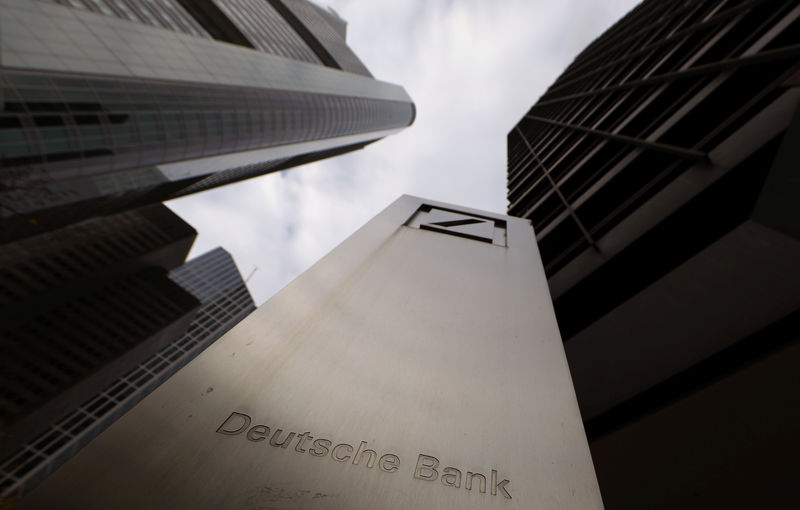By Matt Scuffham
NEW YORK (Reuters) - Some senior Deutsche Bank AG (DE:DBKGn) officials have discussed the possibility of putting additional problematic assets worth billions of euros into a unit it created earlier this year, if the bank is able to sell assets already held within that "bad bank," according to three bank sources.
The discussions in recent weeks, which have not been previously reported, are preliminary, the sources said, adding that there is nothing imminent. A Deutsche Bank spokesman said the bank has no plans to add additional assets into the so-called capital release unit, or bad bank.
Nevertheless, it is one of the options that has come up for discussion at the highest levels at the bank, as executives grapple with the problem of having to turn around the bank on a tight budget, according to the three people familiar with the talks.
Deutsche Bank needs more capital to be able to absorb the losses that will likely come from shedding problematic assets, such as long-dated derivatives, that are still on its books, the people said.
But, after raising 29.3 billion euros (£25.9 billion) in capital over the past nine years, it does not have room to ask investors for more, the sources added.
For investors, still nursing a 75% fall in the bank's share price over the past four-and-a-half years, it means that the road to recovery for the bank will most likely be long.
Christian Sewing, who took over from John Cryan in April last year, is looking to reshape Deutsche Bank after a multi-year bet on building a global investment banking business unravelled.
In July, he set up the bad bank, called a capital release unit (CRU), to house 74 billion euros of risk-weighted assets the bank had identified for wind-down or sale, part of a broader restructuring that will see 18,000 jobs go as it exits unprofitable businesses. Deutsche Bank set aside a 7.4 billion euro budget to fund the restructuring.
Some analysts have been sceptical whether the plan fully recognises the extent of the problem assets still sitting on Deutsche Bank's balance sheet. They remain particularly concerned about its exposure to Level 3 assets, which are the most illiquid and hard-to-value.
"It's a partial clean-up," said David Hendler, an independent analyst at New York-based Viola Risk Advisors. Hendler added that Deutsche Bank has 18 billion euros in hard-to-value assets on its balance sheet, which he estimated will take years to offload.
"They're trying to paint a picture of progress but there's still a lot of sludge in there," he said.
Level 3 assets, which can include distressed debt and derivatives, are not necessarily loss making.
Deutsche Bank has said that the CRU's focus is on releasing capital rather than ring-fencing toxic assets. In a memo to staff on July 8, Sewing described the assets within it as "high quality" and said most were of a short duration.
Only 30% of Deutsche Bank's 25 billion euros worth of Level 3 assets have so far been placed within the capital release unit, according to a presentation the bank gave alongside its quarterly results in July.
The bank has tried to shed some of those assets, which include longer-dated derivatives, over the past three years. But it had little success because it was not prepared to take the writedowns the sales would have required, the sources said.
A sale of a financial asset can lead to a capital hit if the price is below what the bank values it at on its books, leading to a loss.
Deutsche Bank must stay within the budget it has set for its restructuring to avoid having to raise funds from investors, the sources said.
It set up the capital release unit with a view to shedding assets it could realistically find buyers for or wind-down in the next two to three years, the sources said. That, in turn, would free up capital to fund the sale of longer-term assets that will require bigger writedowns, the sources said.
Of the assets currently in the unit, Deutsche Bank plans to run a formal auction of its equity derivatives book as soon as this month, several sources familiar with the sale process have told Reuters.

If those sales are successful, the bank could move more assets into the restructuring unit, the three sources close to the bank said.